🌺 A Sacred Meeting of Two Great Spiritual Masters:
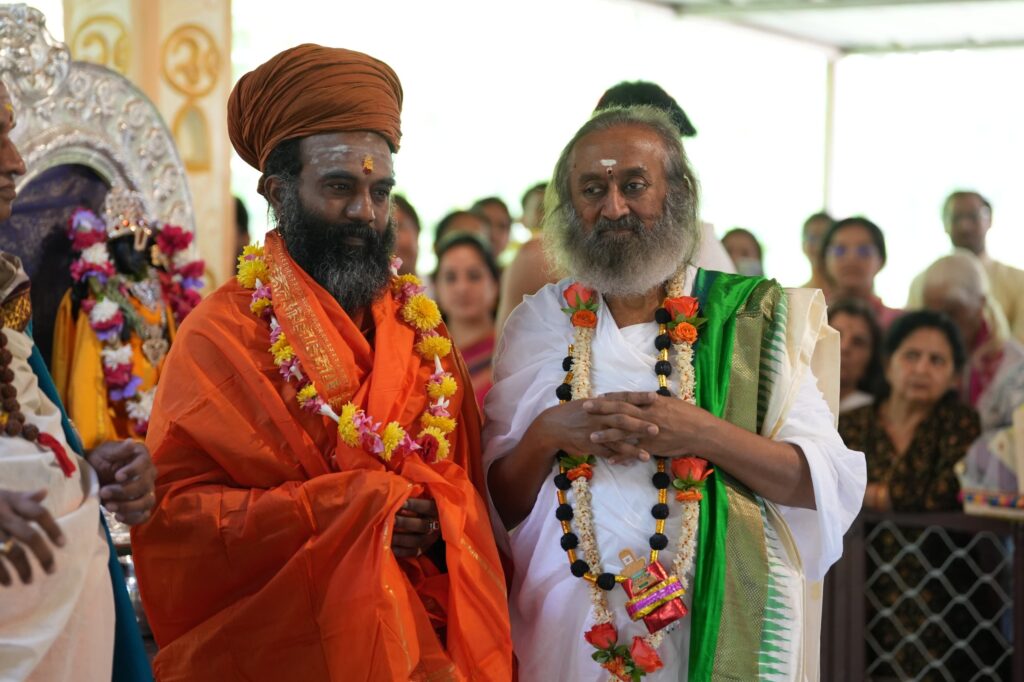
In a moment filled with devotion, humility, and spiritual energy, Shree Raja Rajeshwar Devasthan Aadheenam Mahant Shri Amarnath Swami Ji met with the world-renowned spiritual leader Sri Sri Ravi Shankar Ji, founder of the Art of Living Foundation.
Saint Manikkavacakar: The Voice of Divine Devotion in Tamil Shaivism
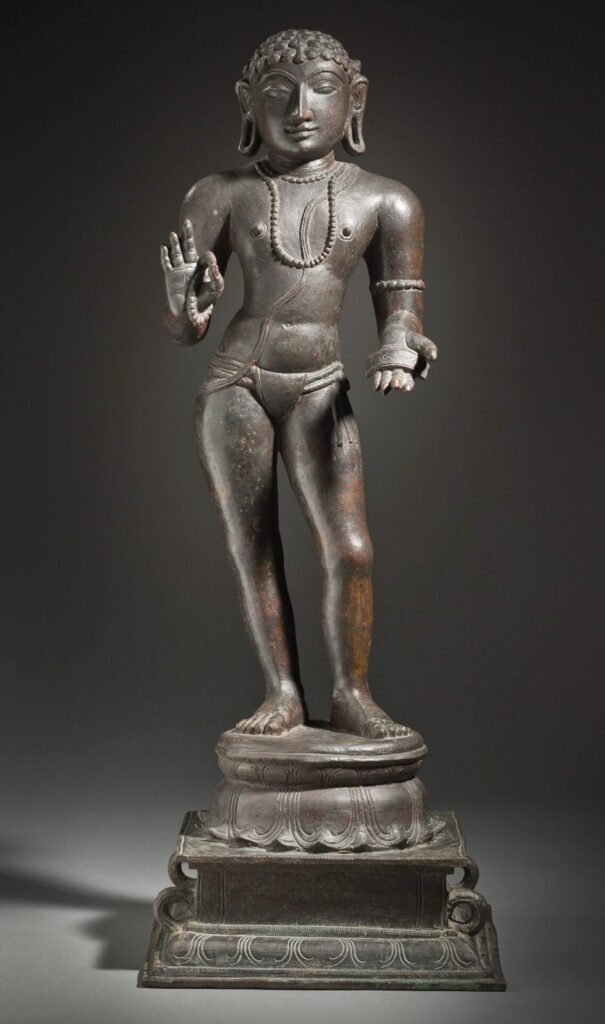
Among the galaxy of Tamil Shaivite saints, Saint Manikkavacakar holds a divine and luminous place. A 9th-century spiritual luminary, he was not only a poet of extraordinary brilliance but also a mystic whose life was a living example of surrender, bhakti (devotion), and divine wisdom.
The Final Days: A Grand Celebration of Faith
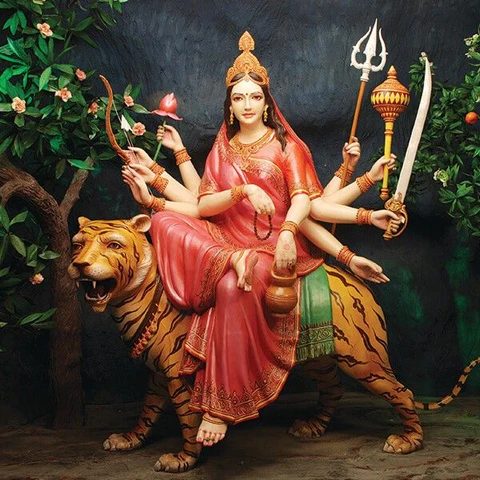
As the vibrant and spiritually uplifting festival of Navratri comes to an end, devotees across the world bid farewell to Maa Durga with hearts full of devotion, gratitude, and joy. These nine days of divine worship, fasting, and celebrations bring a renewed sense of positivity and energy into our lives.
Navratri: The Nine Divine Nights of Devotion and Celebration
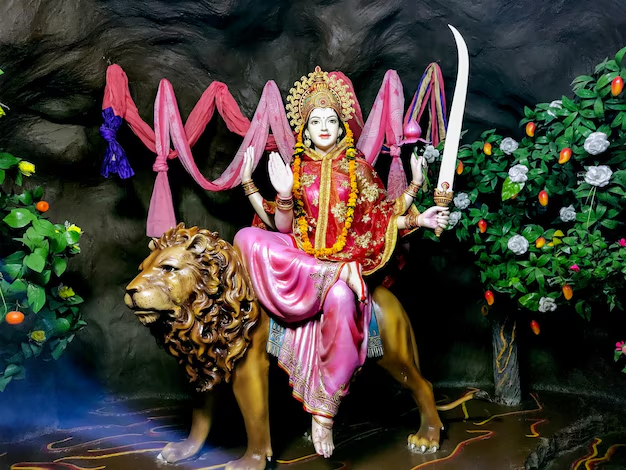
Navratri is one of the most auspicious and widely celebrated Hindu festivals, dedicated to the nine divine forms of Goddess Durga. The word ‘Navratri’ is derived from Sanskrit, where ‘Nav’ means nine and ‘Ratri’ means night, signifying nine nights of devotion, fasting, and celebration.
Rajendra Chola: The Conqueror of Oceans and Lands
Rajendra Chola: The Conqueror of Oceans and Lands Rajendra Chola I, one of the greatest rulers of the Chola dynasty, reigned from 1014 to 1044 CE. He was the son of the mighty Rajaraja Chola I and took the empire to new heights with his military conquests and administrative prowess. Rajendra Chola expanded the Chola […]
Grand Mahashivratri Pooja 2025 at Shree Raja Rajeshwar Devasthan
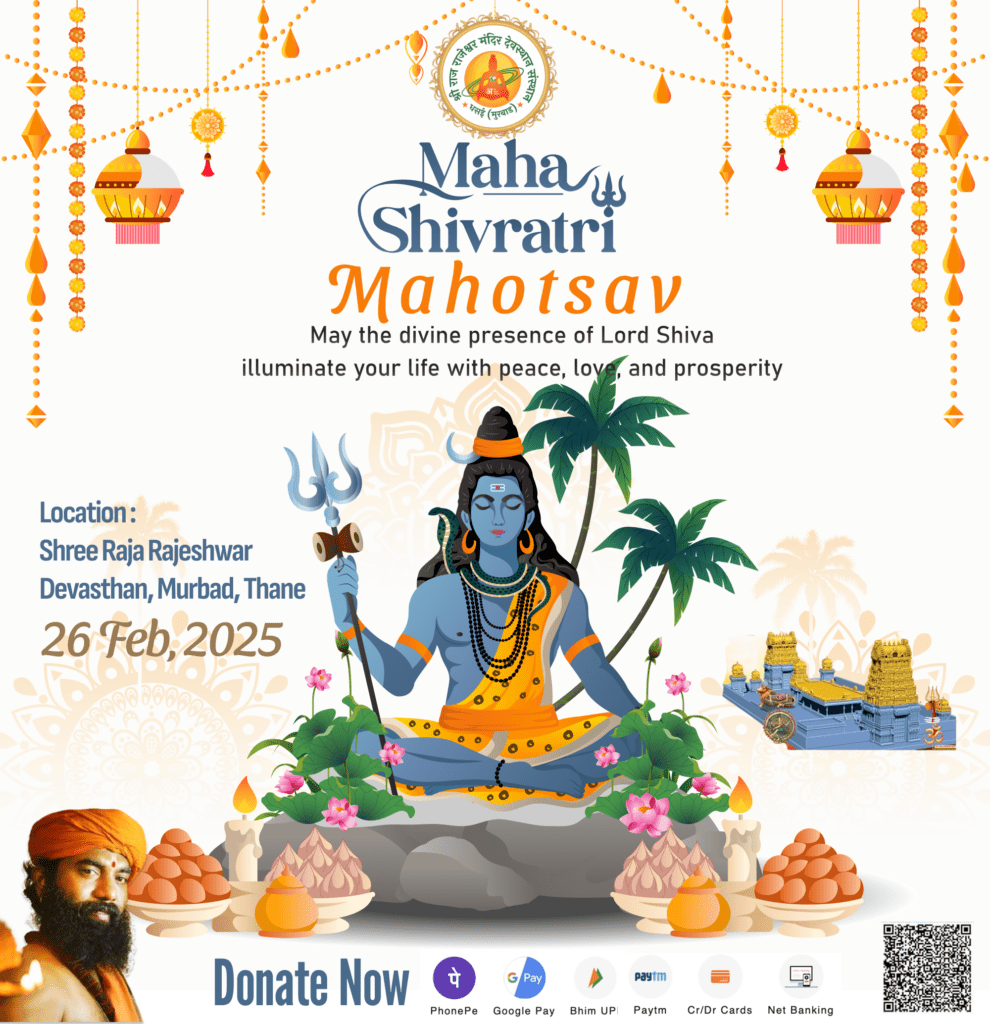
Grand Mahashivratri Pooja at Shree Raja Rajeshwar Devasthan Mahashivratri, the most sacred night dedicated to Lord Shiva, is a time of deep devotion, spiritual awakening, and divine celebrations. This year, Shree Raja Rajeshwar Devasthan invites all devotees to participate in the grand Mahashivratri Pooja, an event filled with powerful rituals, soulful bhajans, and an atmosphere […]
Navdanya Gad Morcha & Kalash Morcha: A Sacred Procession Led by Swami Ji

On 8th February 2025, the spiritual aura of Shree Raja Rajeshwar Devasthan will be graced by two significant and divine processions—Navdanya Gad Morcha and Kalash Morcha—led by Maharashtra Adheenam Mahant Shri Amarnath Swami Ji. These rituals, deeply rooted in Sanatan Dharma, hold profound importance in temple construction and divine worship.
Navdanya Gad Morcha & Kalash Morcha: A Sacred Procession Led by Swami Ji

On 8th February 2025, the spiritual aura of Shree Raja Rajeshwar Devasthan will be graced by two significant and divine processions—Navdanya Gad Morcha and Kalash Morcha—led by Maharashtra Adheenam Mahant Shri Amarnath Swami Ji. These rituals, deeply rooted in Sanatan Dharma, hold profound importance in temple construction and divine worship.
Bhumi Poojan: A Sacred Beginning for Shree Raja Rajeshwar Devasthan

The journey of constructing a divine place of worship begins with an auspicious and sacred ritual—Bhumi Poojan. This ancient Vedic ceremony marks the purification and sanctification of the land, invoking the blessings of the deities for a successful and harmonious construction process.
Celebrating Skanda Sashti Vratam with Maharashtra Adheenam Mahant Shri Amarnath Swami Ji
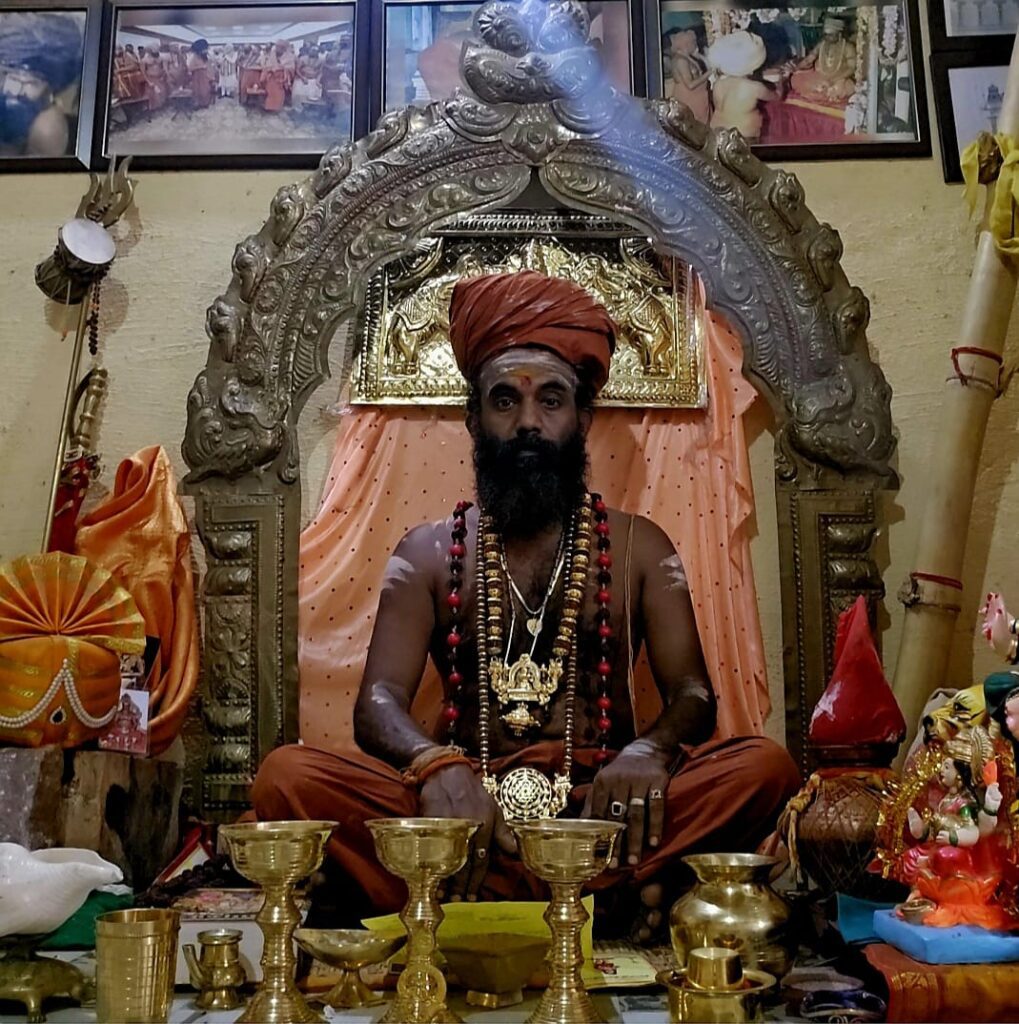
The Skanda Sashti Vratam is one of the most revered Hindu festivals dedicated to Lord Murugan (also known as Kartikeya or Skanda), the god of war and protector of righteousness. Celebrated primarily in South India and by Tamil communities worldwide, the six-day Vratam offers devotees a chance to purify their minds and souls, seeking blessings for strength, health, and prosperity. This year, Maharashtra Adheenam Mahant Shri Amarnath Swami Ji led the devotees of Shree Raja Rajeshwar Devasthan in the observance of this sacred event with great devotion and spiritual discipline.


